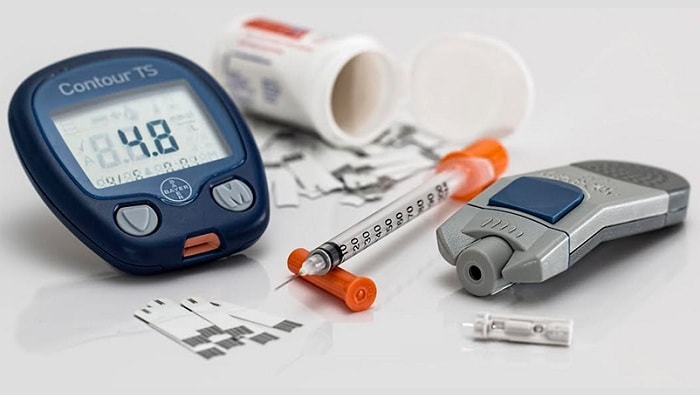Most people worldwide are now dealing with lifestyle diseases, one of them being blood sugar spikes.┬Ā Blood sugar spikes happen when your blood pressure rises and falls sharply after taking your meals. Besides this, some individuals also deal with low sugar levels, a condition caused by different underlying conditions. In summary, many people are struggling to keep their sugar levels stable.
Failing to control sugar levels leads to type II diabetes, a rising problem affecting both the young and the old. The scariest thing is that at least 25% of individuals who suffer from this condition do not know about it, and the condition sometimes turns fatal. Here are a few tips you can use to maintain your sugar level stable.
Keeping a Healthy Weight
Statistics reveal that two out of three adults living in the United States are overweight. Being overweight or obese is disadvantageous since your body finds it challenging to use insulin or break down the sugar levels, leading to high blood sugar levels.┬Ā If this high sugar level condition is not controlled, it later develops to type 2 diabetes.
Weight loss proves as one of the effective methods you can use to maintain your blood sugar levels. According to research, obese individuals who exercised and lost weight reduced their blood sugar levels drastically.┬Ā Also, weight loss reduced the incidence of developing type II diabetes by a whopping 58%.
Taking Glucose
If you have diabetes, taking glucose is one way of maintaining your blood sugar level. How does this happen? Glucose is indeed sugar. However, glucose contains simple sugar that the body breaks down for energy. As highlighted in this blog about Glucose Tablets, taking glucose helps to increase blood sugar levels. This procedure is helpful for individuals who have type II diabetes since their bodies do not produce or resist insulin.
If you do not have diabetes, your insulin will help your cells use glucose for your body’s energy. However, when your body has enough glucose, the excess will be stored in your liver and will be used whenever you need it in your body. Individuals with diabetes do not have insulin for this process; thus, they will need the tablets to stabilize their sugar levels.
Exercising More
 Exercising and maintaining a healthy weight are two different things. You can have a healthy weight, but not exercising and vice versa. However, exercising is also one of the approved methods you can use to maintain your blood sugar levels.┬Ā For healthy individuals, exercising ignites the muscles to absorb more sugar from the blood, reducing the excess sugar levels.
Exercising and maintaining a healthy weight are two different things. You can have a healthy weight, but not exercising and vice versa. However, exercising is also one of the approved methods you can use to maintain your blood sugar levels.┬Ā For healthy individuals, exercising ignites the muscles to absorb more sugar from the blood, reducing the excess sugar levels.
You can practice high-intensity or low-intensity exercises, which work best to maintain blood sugar levels.┬Ā Individuals who practice a lot have recorded some of the most stable sugar levels, regardless of age.┬Ā However, exercises performed before taking meals, including breakfast, proved to work better in controlling sugar levels than those done after meals.┬Ā Besides this, exercising also helps maintain a healthy weight, a factor related to maintaining healthy sugar levels.
Drink More Water
Did you know that failing to drink enough water can lead to high sugar levels?┬Ā When you are dehydrated, the body produces a vasopressin hormone. A vasopressin hormone makes the kidneys retain body fluids and stops the body from flushing excess sugar via urine. This also makes the liver release the stored sugar into the body, leading to high sugar levels.
Drinking at least one liter of water per day reduces the chances of developing high sugar levels. Not taking water leads to increased vasopressin hormone, resulting in insulin resistance, leading to type II diabetes. There is no recommended amount of water you should take to prevent this. It all depends on your body and the water loss rate. However, it would be best not to wait until you are dehydrated to take water.
Go Low Carb
Excess carbohydrates in the body cause sugar levels to rise significantly.┬Ā The reason is that these carbohydrates get converted into simple sugars, which then get to the bloodstream.┬Ā The more the sugar levels rise, the more the pancreas releases insulin, making the cells absorb sugar from the blood, lowering the sugar levels.
Eating a low-carb diet helps maintain the blood sugar level since no more sugar will accumulate in the bloodstream. Besides this, a low-carb diet helps to reduce weight, which then reduces sugar levels. If you aren’t into heavy exercises, limit the number of carbs to keep your blood sugar level.
With simple diet changes and other precautions as stated above, you can effectively maintain your blood sugar at recommended levels. However, before practicing the methods, it is important to have your sugar levels checked. Some of the precautions listed above help increase, while others lower the sugar levels to the recommended standard.┬Ā Talk to a professional before making changes to maintain your sugar levels.


















